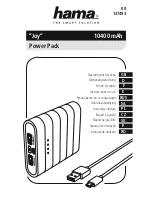
PSI302P – Instalation and Maintenance Manual
3
INTRODUCTION
The function of impedance in a power supply is to implement a circuit output impedance greater
than 3 K wich, in a parallel with the two terminators of 100 ± 2% each, results in a line impedance if
about 50. This impedance can be implement in a passive mode (50 resistance in series with a 100
mH inductance) or in an active mode, through a impedance control circuit.
DEFINITION
The fieldbus Power Supply Impedance is a non-isolated, active impedance control device, in
accordance with Standard IEC 1158-2. This device presents an output impedance wich, in parallel
with the two bus terminators (a 100W resistor in series with a 1 mF capacitor) required by the
standard, results in a purely resistive line impedance for a broad frequency range.
The PSI302P, (because of the power supplied, cannot be used directly in areas requiring intrinsic
safety specifications.
Figure 1 shows the Device Block Diagram. The PSI302P can be used in redundancy, connecting
their output (+ E -) in parallel. When this configuration is used, use external terminator (BT302) to
allow PSI302P change in case of failure, without Fieldbus interruption (See fig. 2).
As to its external physical characteristics, the PSI302P presents power supply and overcurrent
indication LEDs. The input terminal block has two terminals (1A e 2A), wich are connected to the
external 24 Vdc. The power supply indication LED is green and is must be energized while there is
external 24 Vdc power supply.
























